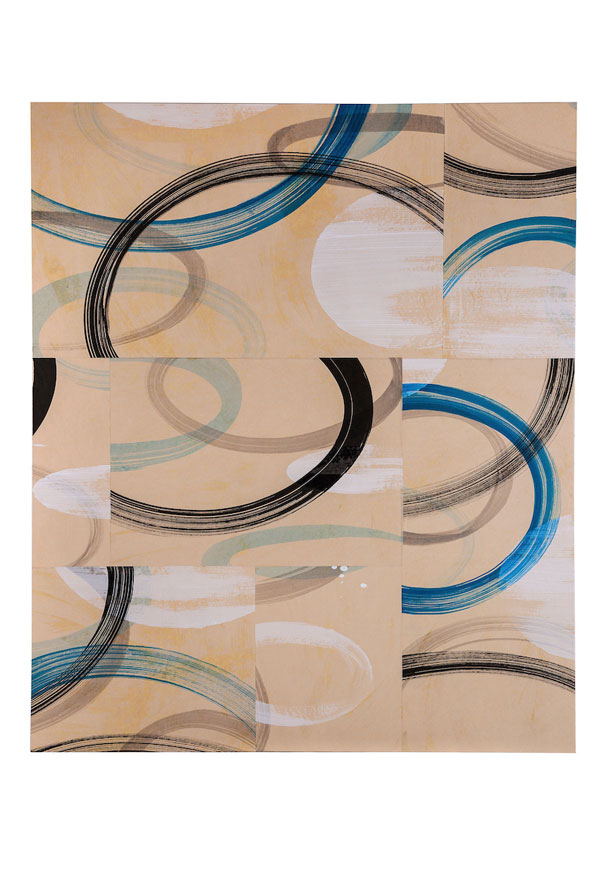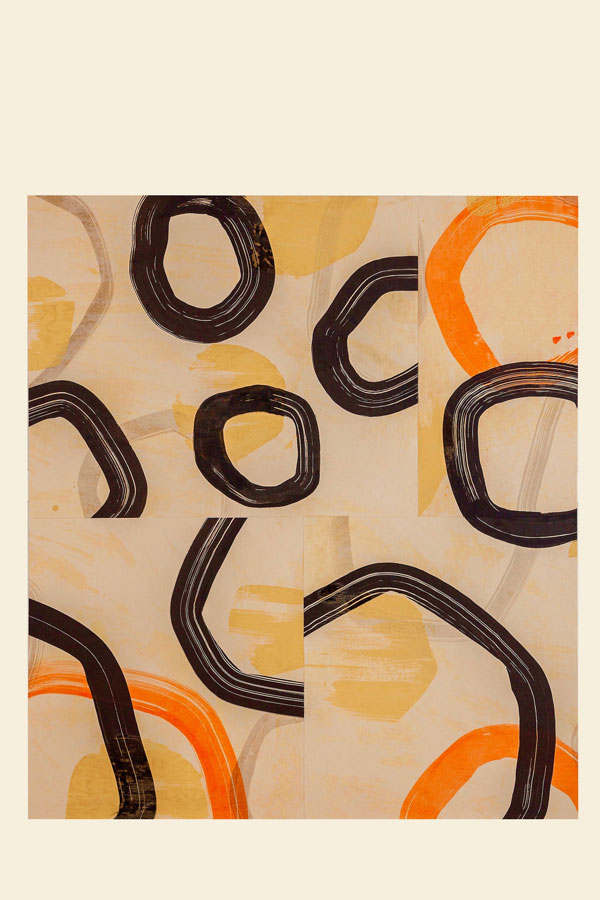Long dedicated to an elegant abstraction reliant on repeated forms and broken, almost prismatic, visual fields, all rendered in limpid colors, Peter Zaleski has recently sought to brace that graceful approach with a greater stringency—limiting the recurring figures, for instance, to linear shapes and muting his already tempered palette to a range of earthy tones (not least those prevalent in the desert, where he has lived for the last several years).
Zaleski’s earlier work featured a balance of austere and decorative impulses; this recalibration has suppressed the latter in favor of the former, with surprisingly little loss of charm. What has almost disappeared is a visual sense of the familiar—Zaleski’s images no longer look so readily like things in the world—but what has been enhanced as a result is a flavor of the familiar. That is, Zaleski’s colors and forms seem increasingly rock-like or reed-like or pond-like even though they look less rock- or reed- or pond-like than ever. You could parallel Zaleski’s evolution to Monet’s: the contemporary painter now composes structures and wields colors for their own sake, confident in their relationship to the world around us and thus freed of any forethought responsibility to “represent.” For all the lingering—in fact heightened—“natural” qualities in his new work, Zaleski has committed himself to full nonobjectivity.

Peter Zaleski,Aquifer (Coachella), 2016, courtesy the artist
Since the 1970s, pattern painting has been conflated with decorative painting (so that what was called “pattern painting” at its emergence is now known historically as “pattern and decoration”). But, except perhaps on the level of aesthetic ideology, the two genres are different. Zaleski’s development—and the clear distinction he has established between his old work and his new—demonstrates this difference within a single oeuvre. Once engaging decorative motifs, eccentric and referential, he now engages patterned elements, reductive in their formal language and rhythmic in their recurrence. To be sure, the former work was never kitschy; but neither is the new work self-effacing or boring. In fact, the reduced vocabulary allows the occasional hints of the real world—a suggestion here of stones beneath flowing water, there of grasses blowing in the wind—to resonate that much more emphatically. Is it our minds seeking some sort of familiarity? No more so than with most abstraction; it is Zaleski seeking to keep the sap running, you might say, through the architectures he builds out of natural material.

